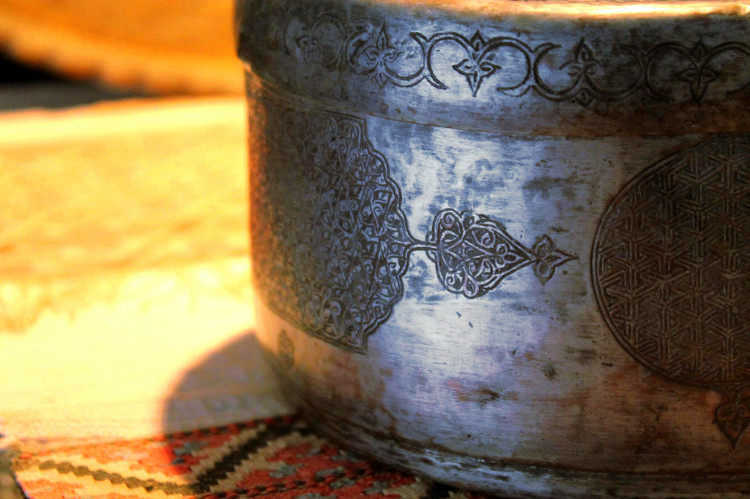Bakhchysaray was originally a Tatar city – things changed after wars with Russia and the Russian occupation. Bakhchysaray is currently a Crimean touristic town witn population of less than 34,000 inhabitants – in addition, the Tatars became a minority. The main tourist points are the Palace of the Crimean Khans, Tahtali-Jami Mosque, Uspensky Cave Monastery and rock cities: Chufut – Kale, Bakła, Eski Yurt, Mangup.
What is hidden in the walls of the Khans’ Palace?
It guards magnificent chambers, beautiful mosque, peace of those who were buried in the Khans’ cemetery. One may consider it as being nothing out of the ordinary, just the palace and its shrines, a temple… But try to use your imagination, and travel back to the times of Khans and their brides, in the days of Bakhchysaray’s glory, and you will discover that this place is amazing, graceful, and glamorous. Imagine the palace at the time of its creation, in the sixteenth century, while being the center of Tatar culture. For a moment, feel as if you are a guest there – sitting beside the fire glowing in the darkness of the night, feasting with others, watching beutiful Tatar women dance, and hearing joyful songs that stir the warm, summer air…

Music room in the Harem’s chambers
It’s really worth to sit for a while in the palace and allow yourself to get captured by its magical aura… I really fell in love with this place, although I usually avoid visiting museums and the like. Moreover, try to add the fact that it is one of only three surviving in Europe Muslim palace complexes. Of course, there are also other reasons to visit the palace! In a room with an exhibition we met a very friendly lady guide who knew a few words in Polish and willingly got into a discussion with us. She had some distant relatives in Poland, so she was even more willing to engage in a dialogue. If you are going to visit Ukraine, be prepared to face many friendly people 🙂
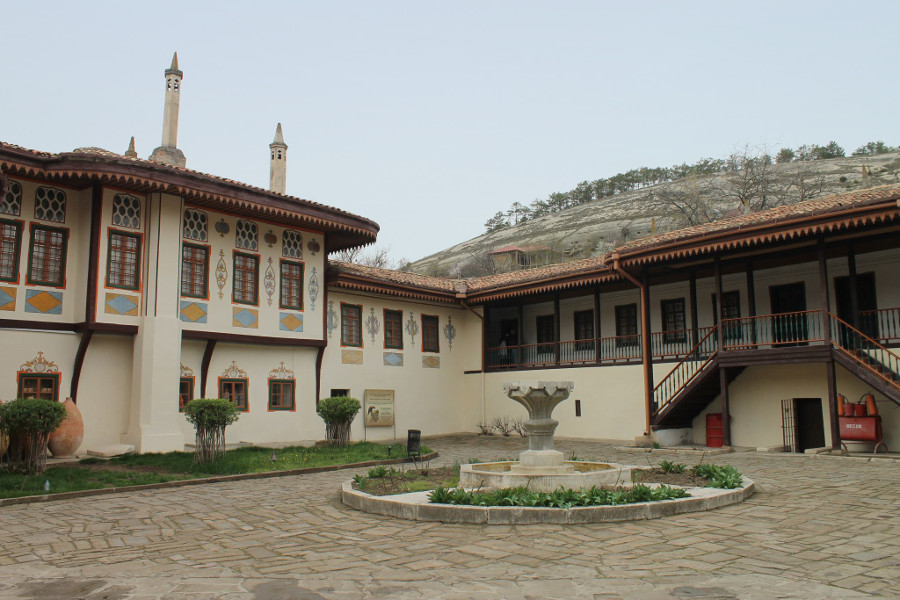
Square with a fountain in the palace
Tatars worshipped water and water sources, because for them water was the symbol of life. It was prohibited to spit or urinate into water, water theft was punished by banishment. The climate of the Crimea made water as precious as gold. I suggest those interested in the details of the unique respect and veneration of water sources by the Tatars to read this article (PL).
The most famous of the fountains in the palace complex is the Fountain of Tears. The legend connected to it has always been moving hearts: Alexander Pushkin wrote about it in his poem “Fountain of Bakhchysaray”. What’s more, the poem was presented in a ballet version – fragments of that ballet are available here. The poem is about a tragic love story of the last Khan and mysterious Dilijara. The fountain is a symbol of the return of suffering after the loss of a loved one.

Richly decorated Tatar craft

One of many beautifully decorated chambers
Pushkin was not the only poet who was inspired by Bakhchysaray. Also, Adam Miskiewicz was charmed by this place, and dedicated to the city and the palace a few sonnets: “Bakhchysaray”, “Bakhchysaray at night”, “The Grave of Countess Potocka”, “The Graves of the Harem”. Below is the text of “Bakhchysaray”, which I really liked:
In ruin are the spacious, splendid halls
With frozen forest of white columns where
The Tartar Khan his palace builded fair,
Where loneliest the shrilling cricket calls.
The ivy blackens over shining walls
Enscribing in gigantic letters there
Some curse Belshazzar-like: Beware! Beware!—
Then black as crèpe from crested columns falls.
Within the burnished banquet room there sings
The fountain of the harem pure and clear,
Just as of old it sang in twilights drear.
But whither love and fame speed—on what wings?
When all things else must perish these endure!
Yet both are gone! The fountain ripples pure. (source: Project Gutenberg)
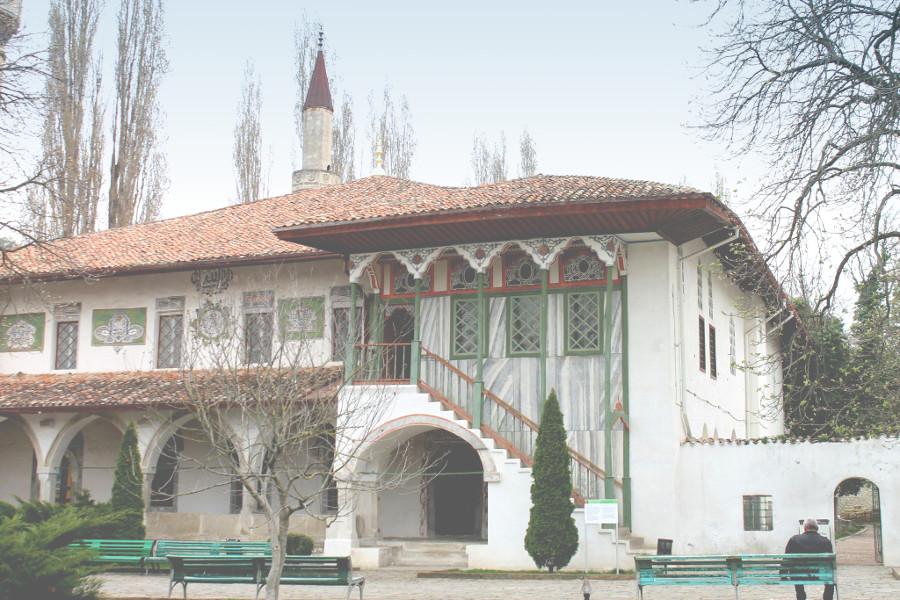
Tahtali-Jami Mosque
A short documentary movie about Bakhchysaray from 1930
Rock’s value
Around Bakhchysaray there are several trails. One of them runs beside Uspensky Cave Monastery and heads straight to Chufut – Kale.
Only a small portion of the Uspensky Cave Monastery is available for public view, and more specifically the Orthodox Church, which is completely made in rock. The entrance is restricted because also these days it serves as a male monastery.
The entrance to the Church is free, but if someone feels the need – s/he can make a sacrifice for its maintenance. Before entering, one can also buy devotional items and special thin candles (called “ofirky”), which the faithful light on and put on a special holder during the services or when visiting the Church. This lit candle is a symbol of love, sacrifice, light and prayer.

Stairs leading to the Church and Monastery
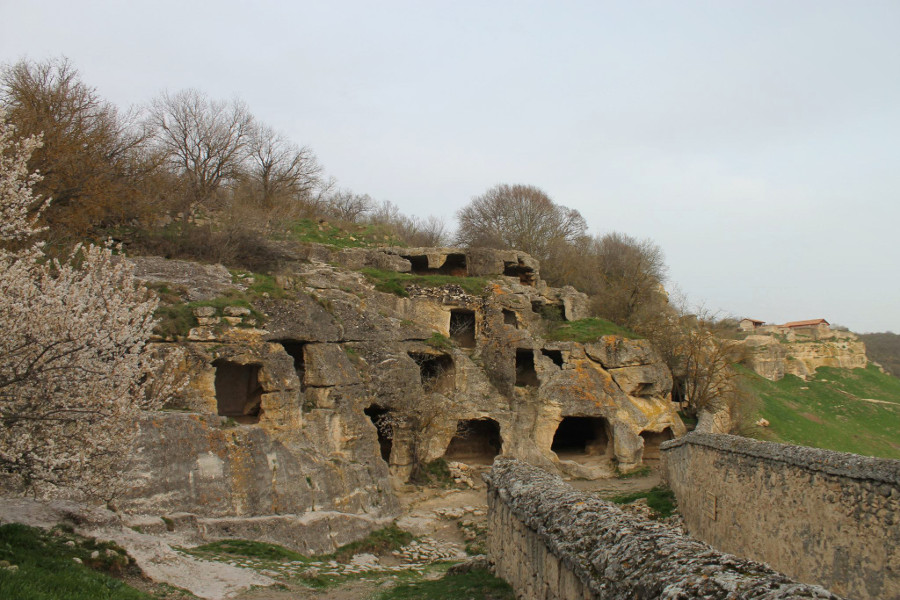
The city made of rock – Chufut-Kale
After a walk through a small forest (where a campsite islocated), and moving slightly uphill, one reaches the gates of the rock city Chufut-Kale. To enter the area one should pay an entrance fee of 40 UAH. The city is not open day and night, and the march to it takes between 2 – 3 hours – it is a good idea to leave earlier to see it, it is really worth doing so!
The majestic walls of rock town Chufut-Kale do not make it feel cozy – unlike the palace chambers they are definitely the opposite of glamorous. But I dare say that the builders should be highly respected. Drilling in rock in the sixth century certainly must have required a huge amount of work and time. Especially, that the city has as many as 46 acres!
Raw walls of the city served as a refuge for many different cultures: Alans, Polovtsy, Tatars, Armenians, Karaites, and even the Mongols!
Adam Mickiewicz in his Crimean Sonnets also did not omit Chufut-Kale, the title of one of his sonnets referring to the city is “The Pass Across the Abyss in the Chufut-Kale”. Also one of the scenes in the movie by Jerzy Hoffman “Colonel Wolodyjowski” was recorded here. Can you guess the scene without looking in online sources? 🙂

Mausoleum in Chufut-Kale
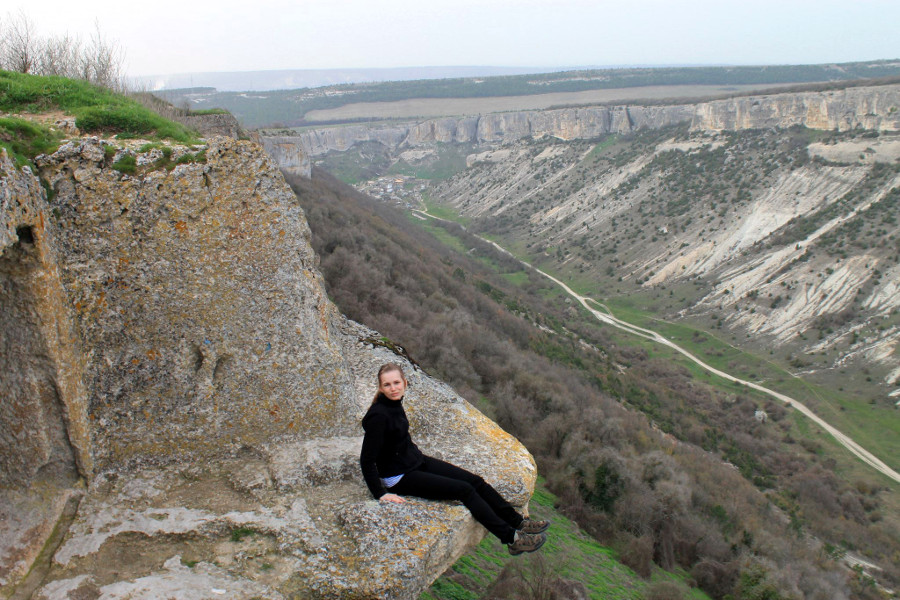 From this balcony there is a long way down 😉
From this balcony there is a long way down 😉This is not the end of the Polish accents in Bakhchysaray. Almost everyone who visited the Bakhchysaray noticed one thing: advertising sheets of Pruszyński Company in the city center 🙂
In a week you will have the opportunity to read about a place from where it is very easy to get from Bakhchysaray – extremely charming, alluring during hot summer and somewhat unpredictable in April when we visited it.
Other interesting materials:

